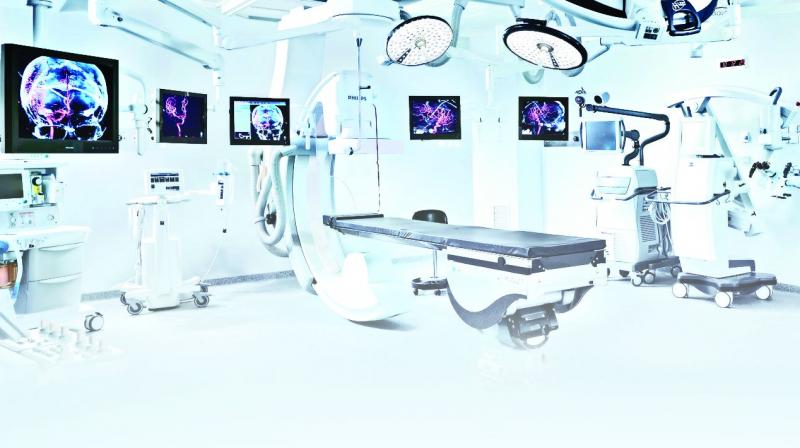Trade margins to hit quality of healthcare
Locally manufactured device must be of good quality: Doc.

Hyderabad: Trade margins for medical devices have become a bone of contention between the government and manufacturers and importers of the devices, as the price capping strategy that the government wants to introduce will not work for all devices and can affect the quality of care in hospitals.
The recent move by the government for Trade Margin Rationalisation will reduce costs and make the devices affordable, but there are fears that this will compromise the quality of the products.
Medical devices include medical disposables and consumables; medical el-ectronics, hospital equipment, surgical instrume-nts, implants and diagnostic reagents.
At present, only 23 de-vices are notified as dr-ugs and regulated under the Drugs and Cosmetics Act. Cardiac stents, cond-oms, intra uterine devic-es and a range of ortho-paedic knee implants are regulated by the government in the National List of Essential Medicines (NLEM). Of these cardiac stents and knee implants are subject to price ceilings.
Dr K.K. Aggarwal, senior member of the Indian Medical Association, says, “We now have two categories of drugs NLEM and non-NLEM.” He believes the trade margins in medical devices need to be fixed to make healthcare more affordable.
At present, the trade margins are fixed by the industry without any regulation. A senior drug control officer in TS said, “The trade margins are fixed according to the whims and fancies of the manufacturers. They are dictating the price in the market. But the regulation is aimed at streamlining the sector and also ensuring that domestic manufacturers get a better chance. Quality checks have to be carried out by the government from time to time to ensure that there are no lapses. Also, those who are illegally operating have to be booked and brought into the legal net.
All manufacturers co-me under the Association of Indian Medical Device Industry (AIMED) and their demand is that domestic manufacturers must be given tax benefits and a level playing field so that they can co-mpete with the import-ers. Most medical devices in India are imported. There is quality assurance in imported products and they are largely used by private hospitals.
A senior doctor pointed out that the domestically manufactured device must be of good quality.
“It’s just like generic drugs. Maintain the quality and there will be takers. The trade margin must not be detrimental for the importer otherwise India will become a dumping ground for low-quality products which will have a reverse effect on healthcare.”
Rajiv Nath, forum coordinator of AIMED, said, “The price of the imported product involves cost, insurance and freight which must be considered. With domestic manufacturers, the ex factory price must be taken into account. These two aspects must be considered by the government before fixing the trade margins.”
Investment in resources to improve standards
Seventy to 90 per cent of medical devices are imported. To ensure that patients get the same quality of product it is important that the government gives domestic manufacturers a strategic advantage, says AIMED.
If the dependency on imports is to be done away with, it is important to strive for quality in the domestic market. For this to happen we need transfer of technology, investment in human resources and also the standards that are presently being followed abroad.
An importer of medical devices in the city who supplies to corporate hospitals pointed out that there is continuous research and development in this sector and that requires a lot of investment. “For a domestic manufacturer to scale up to that level he will require financial and human resources. Healthcare is an evolving industry. Hence trade margins fixed today will also have to be revised from time to time.”

